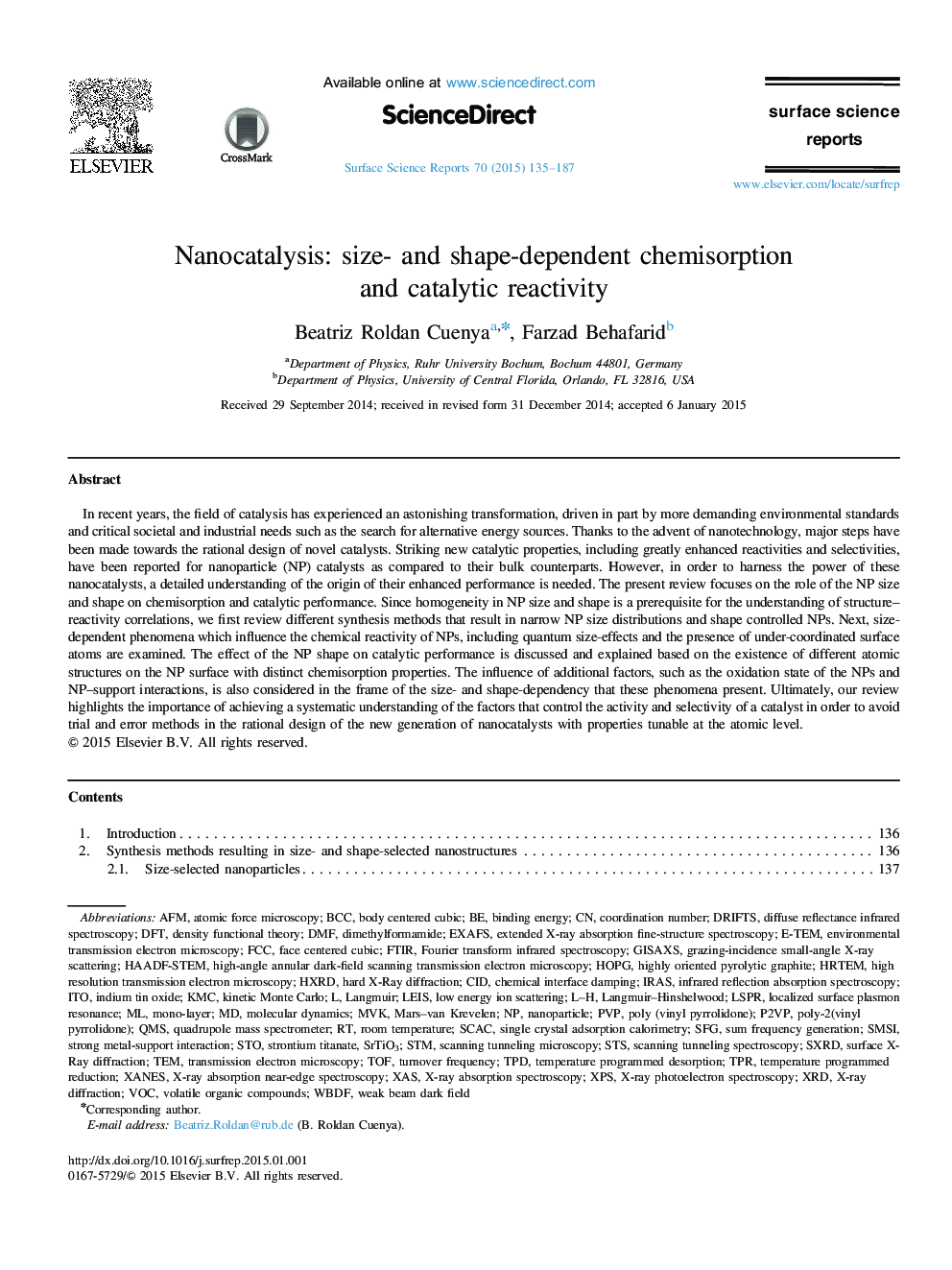| Article ID | Journal | Published Year | Pages | File Type |
|---|---|---|---|---|
| 7845087 | Surface Science Reports | 2015 | 53 Pages |
Abstract
In recent years, the field of catalysis has experienced an astonishing transformation, driven in part by more demanding environmental standards and critical societal and industrial needs such as the search for alternative energy sources. Thanks to the advent of nanotechnology, major steps have been made towards the rational design of novel catalysts. Striking new catalytic properties, including greatly enhanced reactivities and selectivities, have been reported for nanoparticle (NP) catalysts as compared to their bulk counterparts. However, in order to harness the power of these nanocatalysts, a detailed understanding of the origin of their enhanced performance is needed. The present review focuses on the role of the NP size and shape on chemisorption and catalytic performance. Since homogeneity in NP size and shape is a prerequisite for the understanding of structure-reactivity correlations, we first review different synthesis methods that result in narrow NP size distributions and shape controlled NPs. Next, size-dependent phenomena which influence the chemical reactivity of NPs, including quantum size-effects and the presence of under-coordinated surface atoms are examined. The effect of the NP shape on catalytic performance is discussed and explained based on the existence of different atomic structures on the NP surface with distinct chemisorption properties. The influence of additional factors, such as the oxidation state of the NPs and NP-support interactions, is also considered in the frame of the size- and shape-dependency that these phenomena present. Ultimately, our review highlights the importance of achieving a systematic understanding of the factors that control the activity and selectivity of a catalyst in order to avoid trial and error methods in the rational design of the new generation of nanocatalysts with properties tunable at the atomic level.
Keywords
SFGXANESSXRDSTOHOPGMVKKMCVOCHAADF-STEMHRTEMTOFSTMBCCTPDAFMSMSISTSLSPRQMSWBDFL–HDMFP2VPEXAFSDiffuse reflectance infrared spectroscopyMono-layerCIDIRASGISAXSPVPFCCDFTXASBinding energyIndium tin oxideITOTemLEISVolatile organic compoundsStrong metal-support interactionSum frequency generationDRIFTSX-ray absorption near-edge spectroscopyKinetic Monte Carlotemperature programmed desorptionRoom temperaturedimethylformamideMolecular dynamicsLocalized surface plasmon resonanceTPRCoordination numberQuadrupole mass spectrometerFTIRScanning tunneling spectroscopyX-ray absorption spectroscopyInfrared reflection absorption spectroscopyX-ray photoelectron spectroscopyFourier transform infrared spectroscopyXPSTurnover frequencyLangmuir–HinshelwoodLangmuirbody centered cubicFace centered cubicHigh Resolution Transmission Electron MicroscopyTransmission electron microscopyEnvironmental transmission electron microscopyScanning tunneling microscopyatomic force microscopyNanoparticleDensity functional theoryX-ray diffractionXRDSurface X-ray diffractionGrazing-incidence small-angle X-ray scatteringLow energy ion scatteringPoly (vinyl pyrrolidone)Temperature programmed reductionHighly oriented pyrolytic graphite
Related Topics
Physical Sciences and Engineering
Chemistry
Physical and Theoretical Chemistry
Authors
Beatriz Roldan Cuenya, Farzad Behafarid,
